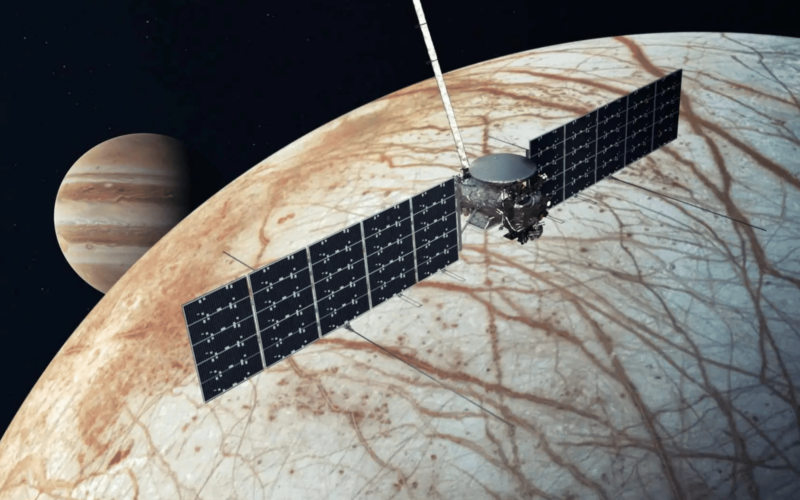NASA scientists are searching for signs of life outside Earth. To explore this further NASA is set to launch a new mission to Europa, one of Jupiter’s largest moons, to explore the chances of finding life beyond Earth.
In a press release published on October 13, 2024, NASA announced that Europa, the fourth moon of Jupiter, is considered one of the solar system’s most promising potentially habitable environments.
The main science goal is to determine whether Europa, which is a bit smaller than Earth’s moon, might have an ocean hidden under its surface, according to NASA. Scientists believe this ocean contains twice as much liquid water as Earth’s oceans.
The mission is scheduled to launch on a SpaceX Falcon Heavy rocket from Launch Complex 39A at NASA’s Kennedy Space Center in Florida on October 14, 2024, 12:06 local time, and will be conducted with a Europa Clipper spacecraft, which is the largest spacecraft NASA has ever developed for a planetary mission.
Once in orbit, the spacecraft will make nearly 50 flybys of Europa at closest-approach altitudes as low as 16 miles (25 kilometers) above the surface. It will pass over various locations during each flyby to scan nearly the entire moon. The spacecraft carries nine instruments and a gravity experiment.
According to NASA, the spacecraft’s payload will include cameras and spectrometers to produce high-resolution images and composition maps of Europa’s surface and thin atmosphere, an ice-penetrating radar to search for subsurface water, and a magnetometer and gravity measurements to unlock clues about its ocean and deep interior.
Additionally, the spacecraft will also carry a thermal instrument to find warmer ice spots and possibly recent water eruptions. It will also have instruments to measure the composition of tiny particles in the moon’s thin atmosphere and surrounding space around it.
Europa is surrounded by radiation from Jupiter’s magnetic field. To protect its instruments, the Europa Clipper will have a strong vault made of titanium and aluminum to shield the electronics from high-energy atomic particles.
The Europa Clipper spacecraft is expected to reach Jupiter in April 2030, after traveling about 1.8 billion miles (2.8 billion kilometers).

